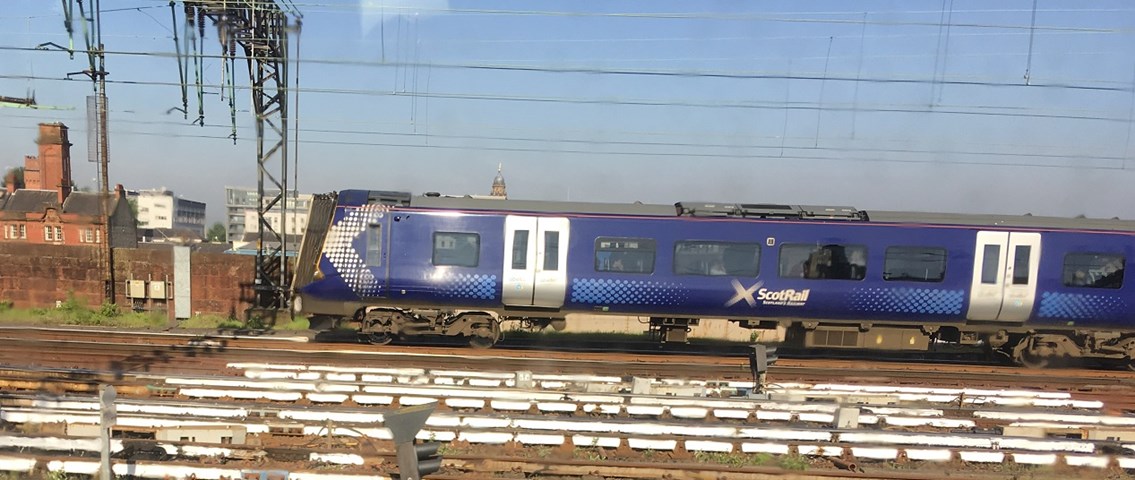Friday 25 May 2018
Scotland’s railway prepares for soaring temperatures
- Region & Route:
- Scotland’s Railway: Scotland
With the country expected to enjoy one of the hottest May bank holidays on record this weekend, special preparations are being made to help keep Scotland’s railway on the move.
During heatwaves, rails in direct sunshine can be as much as 20°C hotter than air temperature and expand as they get warmer – sometimes causing them to curve or buckle.
Network Rail engineers will be carrying out additional track inspections over the weekend and deploying special remote monitoring equipment to help spot rails which are becoming too hot.
If rail temperatures in an area do rise significantly, some localised speed restrictions may be put in place to slow trains down and reduce the amount of force being placed on the rails.
Engineers have also been preparing in advance – stressing sections of track (artificially stretching the rails) in known hot-spot areas and also painting rails white to help reflect the sun and keep them up to 10°C cooler.
David Dickson, ScotRail Alliance infrastructure director, said: “On very sunny days, rails in direct sunshine can be as much as 20 degrees centigrade above air temperature.
“As rails are made out of steel, they expand as they heat up and can buckle, causing disruption to travel.
“If a section of track is judged to be at risk, we introduce speed restrictions – slower trains exert lower forces on the track and reduce the chance of it buckling.
“Our engineers will be out throughout the weekend, monitoring rail temperatures and working hard to make sure we effectively manage any potential issues and keep customers on the move.”
How we prevent tracks from getting too hot:
We work closely with specialist weather forecasters and local weather stations to make plans and take action so rails are less likely to buckle.
- Our teams check track stability each winter as part of ongoing maintenance, and strengthen any weak parts before summer.
- We paint certain parts of the rail white so they absorb less heat – and expand less. Typically, a rail painted white is 5°C to 10°C cooler than one left unpainted.
- As most track is made up of long pieces of rail that are stretched and welded together, there is much less chance of buckling in very high temperatures because there is reduced compression.
- When a track is made up from short rails bolted together, we leave small gaps between each one so that expansion doesn’t cause a problem.
- We’re always improving how we measure and calculate rail temperatures. One way we’re doing this is by installing probes that alert us when track temperatures rise to give us chance to take action and stop a problem before it happens.
- In some parts of the network, tracks are laid on reinforced concrete slabs rather than on sleepers and ballast (the bed of stones that supports the sleepers). This helps to prevent rails from buckling.
Contact information
Passengers / community members
Network Rail national helpline
03457 11 41 41
Latest travel advice
Please visit National Rail Enquiries
Journalists
Network Rail press office - Nick King
Media relations manager (Scotland)
0141 555 4108 / 07515 617073
nick.king3@networkrail.co.uk
About Network Rail
We own, operate and develop Britain's railway infrastructure; that's 20,000 miles of track, 30,000 bridges, tunnels and viaducts and the thousands of signals, level crossings and stations. We run 20 of the UK's largest stations while all the others, over 2,500, are run by the country's train operating companies.
Usually, there are almost five million journeys made in the UK and over 600 freight trains run on the network. People depend on Britain's railway for their daily commute, to visit friends and loved ones and to get them home safe every day. Our role is to deliver a safe and reliable railway, so we carefully manage and deliver thousands of projects every year that form part of the multi-billion pound Railway Upgrade Plan, to grow and expand the nation's railway network to respond to the tremendous growth and demand the railway has experienced - a doubling of passenger journeys over the past 20 years.
Follow us on Twitter: @networkrail
Visit our online newsroom: www.networkrailmediacentre.co.uk

